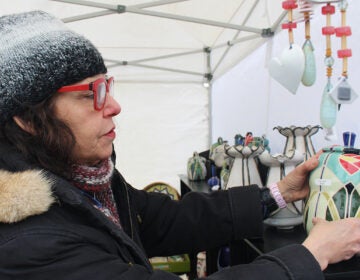A Spring! A Spring! A marvelous thing! Delco hometown honors its Slinky
Born on the water in Philadelphia, the Slinky was developed by one of the first great women of the American toy industry.

Maura McGlensey, 6, of Clifton Heights, plays with a Slinky during the dedication ceremony of a historical marker commemorating the manufacture of the popular toy at James Industries in Clifton Heights. (Emma Lee/WHYY)
A new state historical marker has sprung up in Clifton Heights, Pa., the first for the borough outside of Philadelphia. It commemorates the town’s most famous native: the Slinky.
The coiled toy that walks down stairs — alone or in pairs — was invented by Richard James, an engineer at the old Navy shipyard in Port Richmond, Philadelphia. At the time he was creating stabilizers for nautical navigation equipment.
He noticed how a loose coil of wire that had been accidentally dropped appeared to walk. He thought: that looks pretty fun.
He showed it to his wife, Betty, and she called it Slinky.
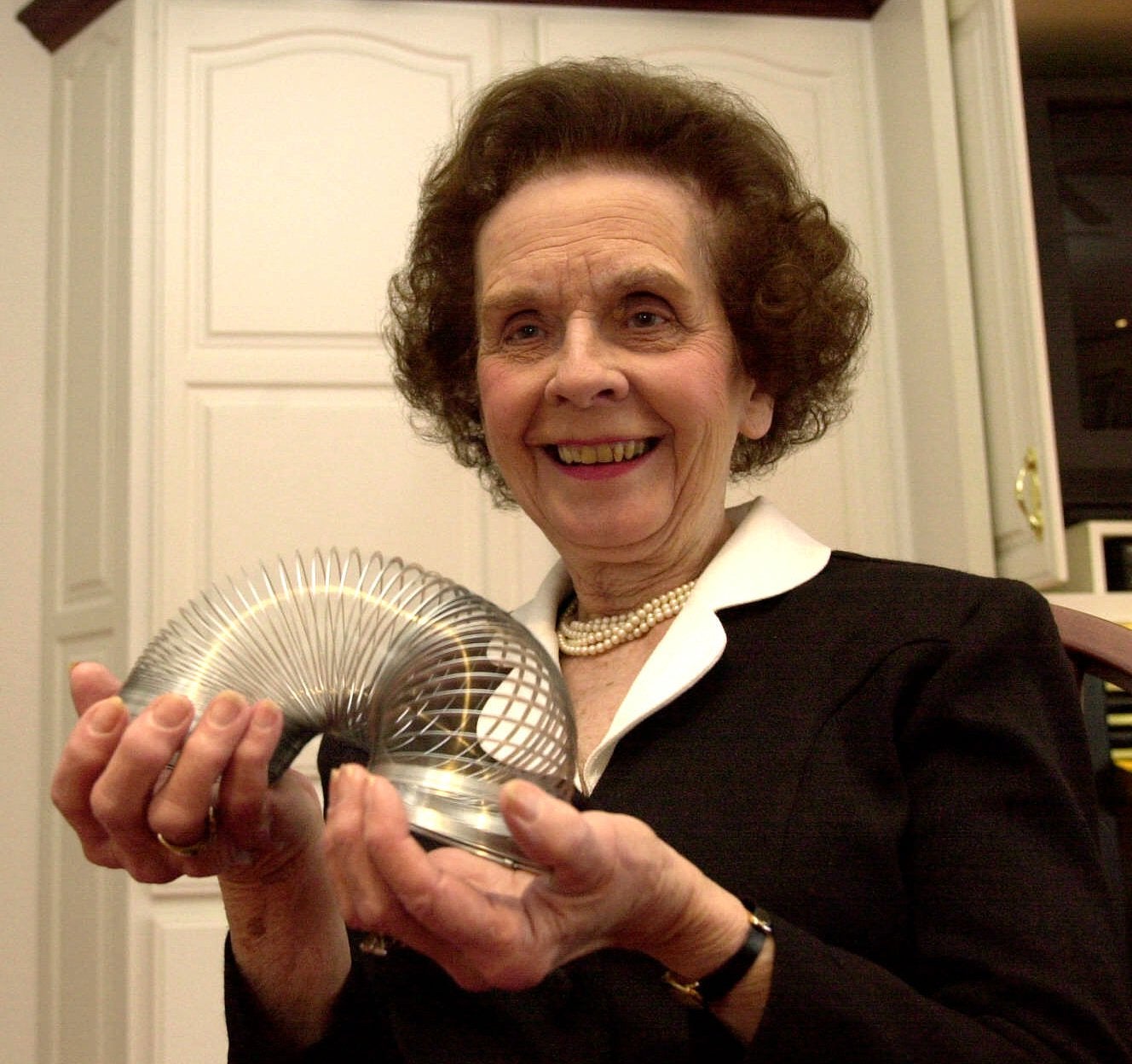
That was in 1943. When the couple first started manufacturing the toy, it was not an instant success. It wasn’t until Gimbels department store in Philadelphia let them demonstrate the Slinky in the store in 1945 that it caught on.
“You don’t have to plug it in. It doesn’t require batteries. It’s portable,” said Joan Francis, 70, who grew up with the Slinky and attended the historic marker ceremony on Friday. “It’s just fun.”
Her husband, Bob, chimed in with those famous words: “Everyone knows it’s Slinky.”
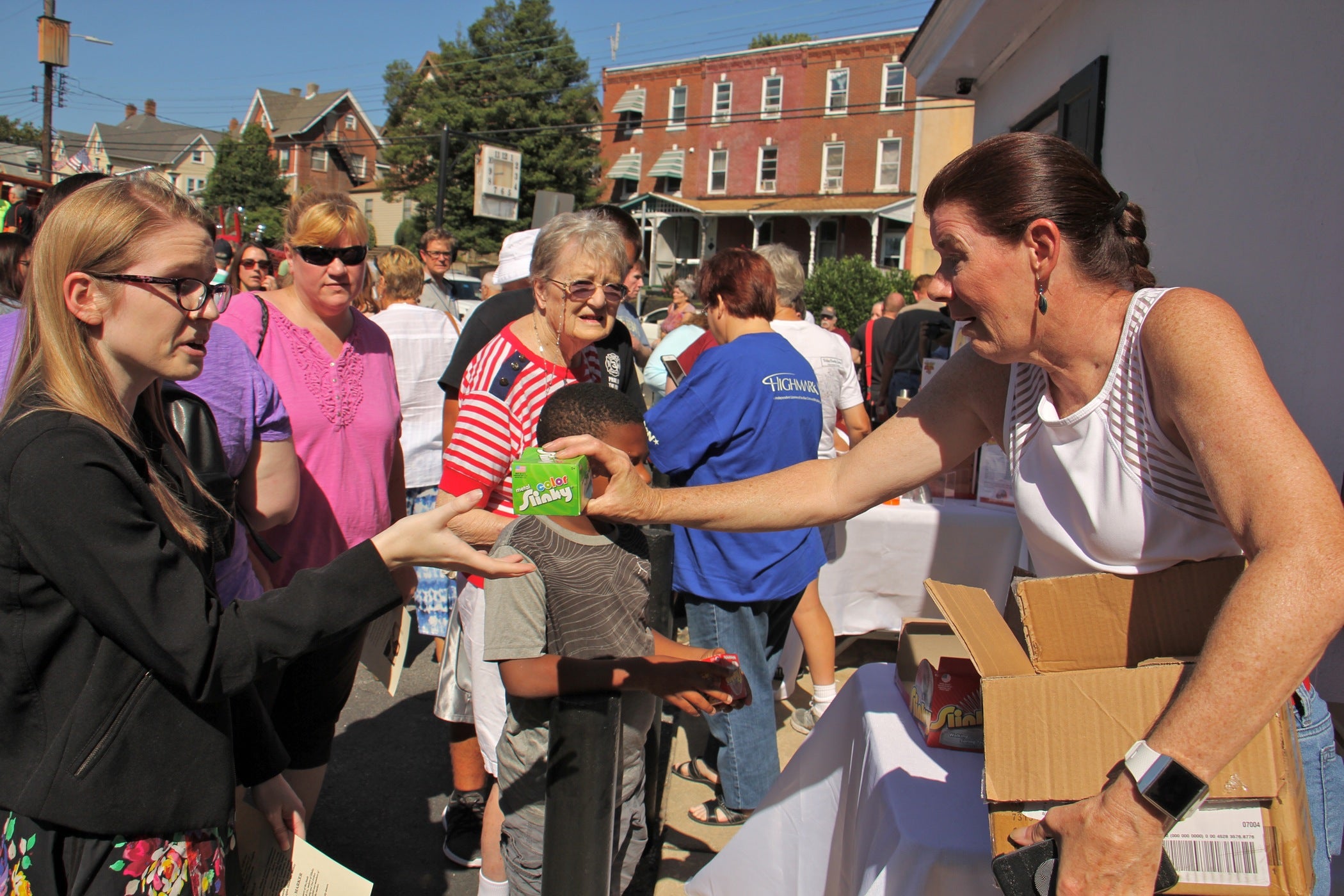
It was Betty James who developed the Slinky’s infectious advertising jingle and made the toy an American success story.
James Industries had established manufacturing operations in Clifton Heights, but by the 1950s the company was nearly bankrupt. In 1960, the couple divorced; Richard left the family to be an evangelical missionary with an obscure religious group in Bolivia. He would die of a heart attack in 1974.
Betty took over the reins of the company, relocating manufacturing to Hollidaysburg in central Pennsylvania, in 1965. She is the one who built the Slinky into an icon of the American toy industry.
“She was, like, 5 foot, 98 pounds, with six kids she’s raising by herself,” said Rebekah James Morris, about her mother Betty. “My dad left when I was 2, I was the youngest. She was just a powerhouse. She was in an industry that was totally male-dominated.”

Betty James, who died in 2008 at age 90, inspired the state marker. Historian Robyn Young proposed the marker to the Pennsylvania Historical and Museum Commission on the strength of both the popularity of the toy and the remarkable story of its matriarch.
“She took a company on the verge of bankruptcy and turned it into a multimillion-dollar enterprise,” said Young. “She went to Hollidaysburg to move the Slinky plant to be around family. In the 1960s, to do that was hard for a woman with six children.”
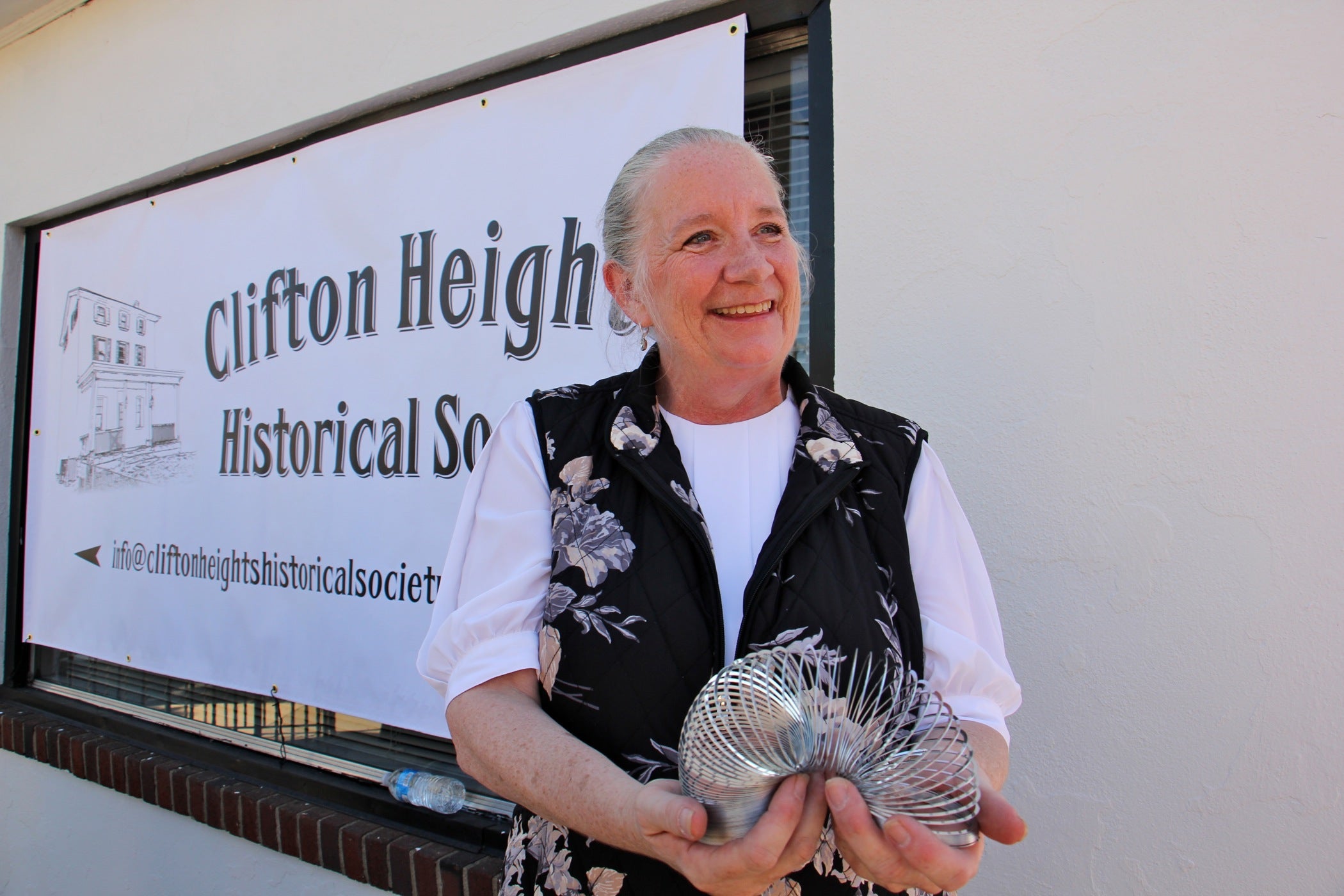
The marker is not at the original site of the Slinky factory, but rather outside the newly formed Clifton Heights Historical Society. The society plans to make a permanent display inside its historic building on Baltimore Pike about the origins of the toy.
Betty James always insisted the Slinky be sold relatively cheaply, even when its popularity could have commanded a higher retail price. Its variations are sold at a higher price: Slinky pull-toys that look like animals. The Slinky Dog is one of the memorable characters in the “Toy Story” movie franchise.
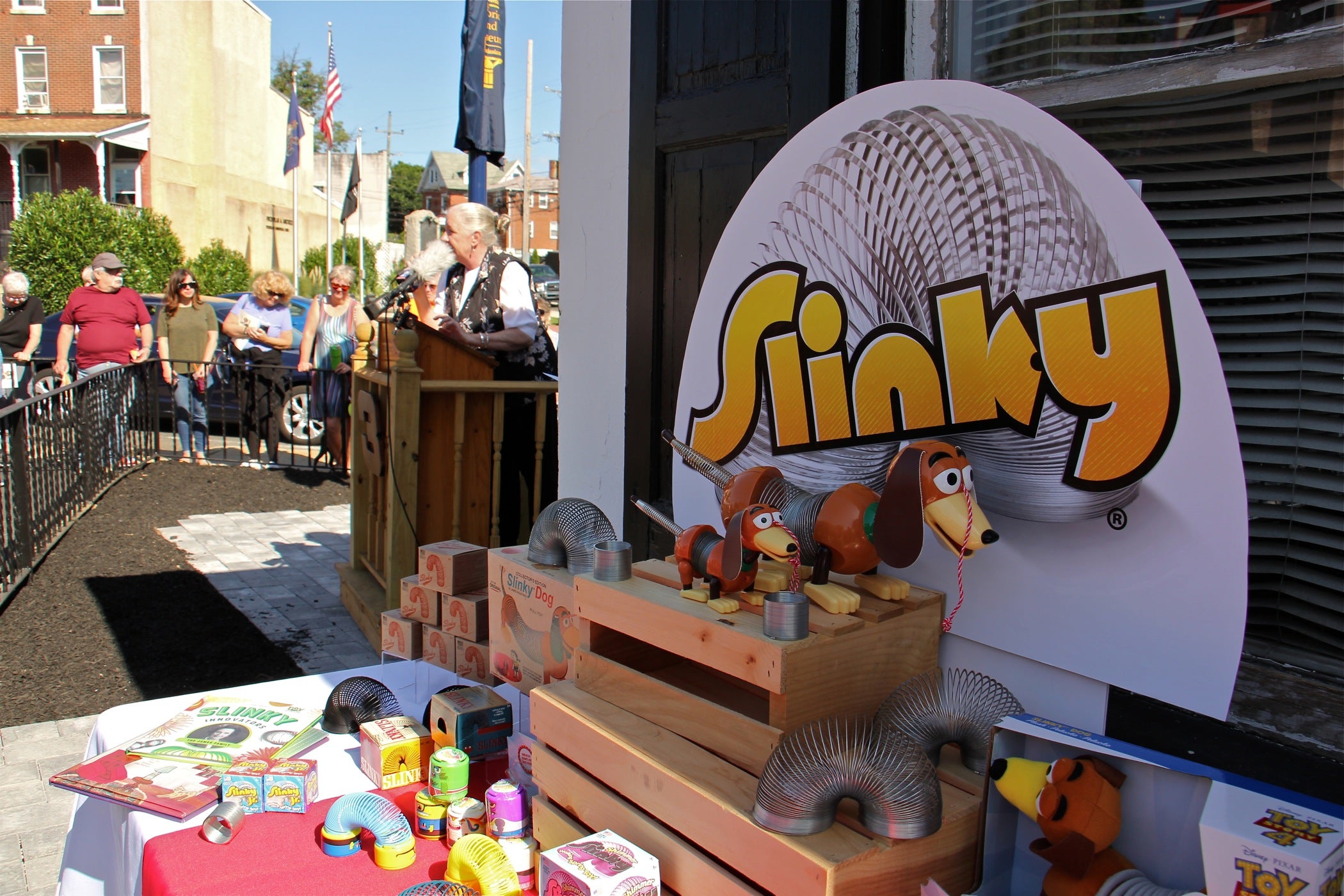
The simplicity of the original Slinky is its strong suit.
“It surprises. It has an element of magic to it,” said state Rep. Mike Zabel, who represents Clifton Heights, speaking at the ceremony. “It has that fluidity to it.”
The low-tech nature of the toy makes it attractive to people on the autism spectrum. Kate McConnell of Clifton Heights grew up with her autistic cousin and said the Slinky was essential to his well-being.
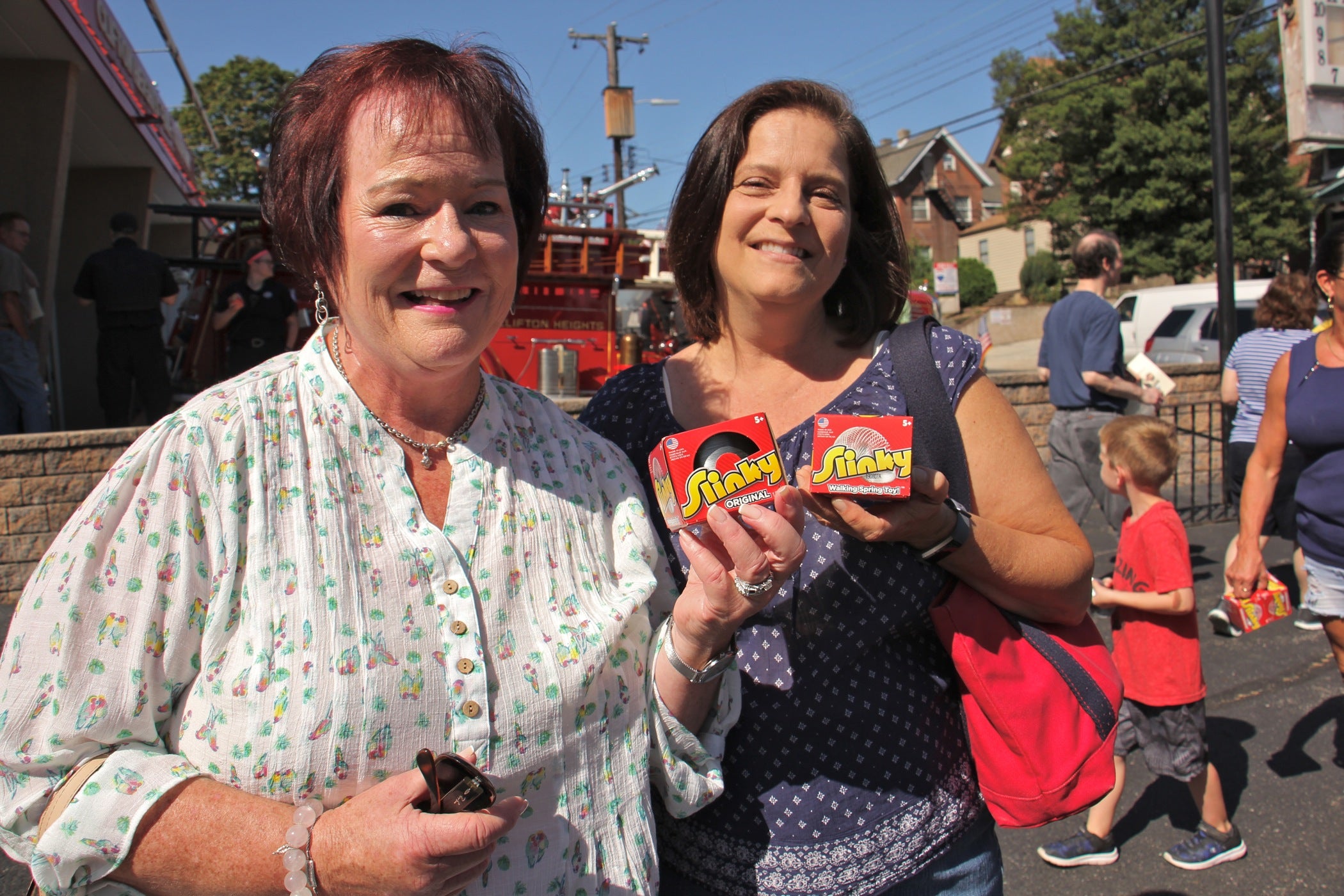
“It was mesmerizing to him. It was something he could control,” said McConnell. “It was his form of communication, because he was nonverbal. It became a way he could communicate with all of the family members.”
Even the neurotypical Rebekah Morris finds the Slinky therapeutic. Unaccustomed to the spotlight, on the day of the public ceremony honoring her mother, she rocked the toy her mother made famous from one hand to the other, as a way to relieve stress.
“It’s bilateral stimulation,” she explained. “So I can calm down.”
WHYY is your source for fact-based, in-depth journalism and information. As a nonprofit organization, we rely on financial support from readers like you. Please give today.



